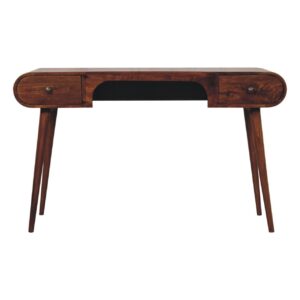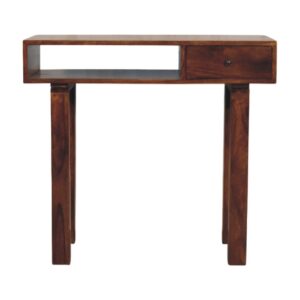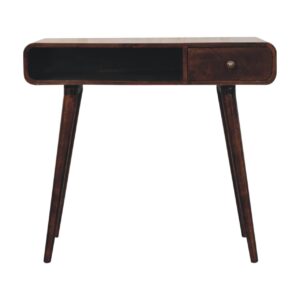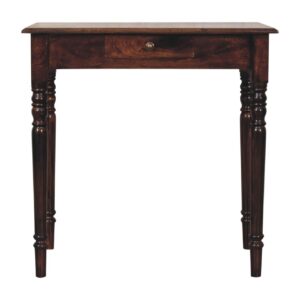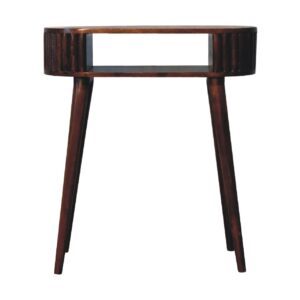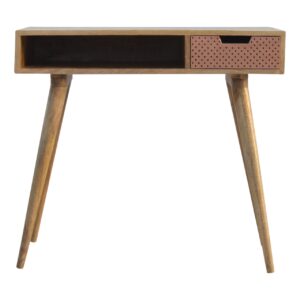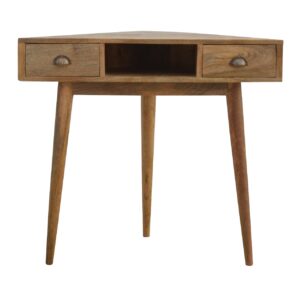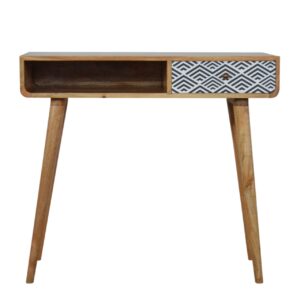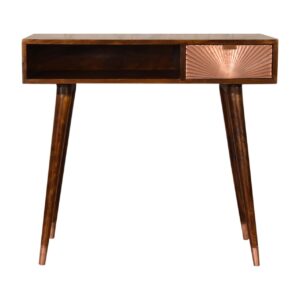Have you ever paused to consider how your desk setup could be impacting your work output and health? The quest for the ideal balance between comfort and productivity centers around an ergonomic approach. This includes adjusting chair height, monitor distance, and the placement of your keyboard and mouse to prevent physical strain and support comfort. Recognizing the need for sufficient space on the desk to move freely and the importance of maintaining an upright posture, interspersed with brief breaks to ward off weariness, is vital.
Our goal is to establish a work environment that not only elevates our output but also safeguards our health over time. Let’s examine the critical elements necessary for assembling the ideal ergonomic desk setup that resonates with our personal needs.
In crafting an ergonomically sound workspace, consider the following:
- Chair Height: The chair should be positioned so that your feet are flat on the ground, with knees at a 90-degree angle.
- Monitor Placement: The top of the screen should be at or slightly below eye level to avoid tilting your head up or down.
- Keyboard and Mouse Positioning: These should be placed in a way that your wrists are straight and your hands are at or slightly below elbow level.
Also, ensure your desk provides ample space to avoid cramping and allows for your arms to move freely, which is particularly crucial during longer work sessions. Taking short breaks and stretching periodically will further prevent muscle fatigue and strain.
By following these guidelines, each individual can tailor their workspace to fit their unique requirements, fostering both productivity and a healthy working environment.
Adjusting Chair Height
Adjusting your chair to the correct height is essential for maintaining good posture and staying comfortable throughout your workday. You should sit in such a way that your feet are firmly planted on the floor, with your thighs horizontal and your knees creating a right angle. This stance helps reduce the stress on your legs and back.
Your arms, meanwhile, should rest easily on your desk with your elbows bent at a right angle to prevent strain. A properly adjusted chair plays a crucial role in preventing musculoskeletal issues and can actually boost your work efficiency by supporting a natural sitting position.
To set your chair to the ideal height, use the pneumatic adjustment lever available on most modern chairs. Be aware that a chair that’s too high or too low can’t only cause discomfort but also increase the risk of injury over time.
Monitor Placement Fundamentals
After adjusting our seating, it’s time to consider the best way to position our monitors to reduce strain on our eyes and improve overall visibility.
Position the top of the monitor at or just below the level of your eyes. This setup allows for a comfortable downward gaze, angled between 15 to 20 degrees when looking at the middle of the screen, aligning with the natural angle of our line of sight and helping to prevent neck discomfort.
The ideal distance for the monitor is roughly the length of an extended arm, about 20 to 30 inches from your face, though this can vary with the monitor’s size and your own visual needs. This space is effective in minimizing squinting and the need to lean forward, which can lead to eye fatigue and neck issues over time.
Proper monitor placement is a key component in creating an ergonomic and productive work environment.
Keyboard and Mouse Ergonomics
Correct positioning of both the keyboard and mouse is fundamental to preventing wrist strain and ensuring comfort during long hours of computer use. Ideally, the keyboard should be at a height that allows your forearms to lie flat, parallel to the ground, ensuring your wrists remain straight and relaxed. This position helps to prevent common repetitive strain injuries.
The mouse should be placed within easy reach and on the same plane as the keyboard to reduce the need for excessive arm movement. For the keyboard, one helpful tip is to align the ‘B’ key with the center of your torso to encourage the use of both hands equally. Adjustable keyboard trays can be highly beneficial, offering the ability to fine-tune the tilt and elevation to suit individual needs.
When selecting a mouse, it’s wise to opt for a design that allows the hand to remain in a relaxed, natural position. By adopting these ergonomic practices, you can maintain a high level of productivity while also protecting yourself from the risk of long-term injuries to the musculoskeletal system.
Importance of Desk Clearance
Clearing the Desk: A Step Towards Enhanced Work Comfort and Efficiency
The significance of maintaining clear space on and around your desk can’t be overstated. Ample room beneath your desk isn’t just about comfort; it allows for proper leg placement and the opportunity for occasional stretches. These actions are vital for maintaining comfort over long periods and supporting blood circulation.
Above the desk, having enough room is crucial for a variety of tasks, which helps prevent physical restrictions, thus aiding in maintaining productivity and decreasing the likelihood of physical strain.
A tidy and orderly desk surface is about more than just appearance—it’s about efficiency and health. A desk cluttered with unnecessary items can become a source of distraction, lead to reduced work efficiency, and even cause ergonomic problems as these objects infringe on the space required for maintaining correct posture.
A minimalist approach to desk organization not only aids in mental focus but is also conducive to physical health. Clearing your desk effectively supports an ergonomic work environment that’s fundamental for both well-being and productivity.
Posture and Break Strategies
Examining the impact of proper posture and structured break schedules can greatly benefit the ergonomic setup of your workspace. Correctly aligning your posture and adhering to a schedule for taking breaks are vital to maintaining concentration and avoiding physical discomfort. These practices are not mere recommendations but fundamental for a work environment that supports long-term health and efficiency.
| Aspect | Recommendation |
|---|---|
| Spine Alignment | Keep it straight, supported by the chair’s backrest |
| Arm Position | Keep them parallel to the floor; elbows at a right angle |
| Eye Level | Monitor positioned so the top is at or just below eye level |
| Leg Position | Keep feet flat on the ground or on a footrest |
| Break Frequency | Take a 5-minute break each hour |
Consistently following these pointers can actively lower the chances of developing musculoskeletal problems and can increase our work efficiency.
By approaching these recommendations with the diligence of investigative research, we can challenge the common assumption that comfort and productivity at the workstation are mutually exclusive. It turns out that by paying attention to the way we sit and the frequency of our breaks, not only can we work smarter, but we can also protect our well-being in the process.
Remember to adjust your chair and monitor to fit these criteria, and don’t underestimate the power of short, consistent breaks to refresh your mind and body throughout the workday.


